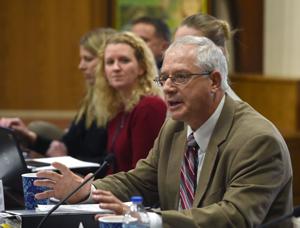
People who live in a neighborhood with features such as sidewalks, a park, coffee shops, restaurants and access to public transportation are likely going to be more active than if they lived somewhere without them. That’s because those features are signs of a walkable neighborhood — and walkable neighborhoods are associated with increased activity level, according to a new twin study led by a researcher at Washington State University. The research, published in the American Journal of Epidemiology, isn’t the first to show a connection between walkability and activity level.
What it does do, said lead author Glen Duncan, is demonstrate that those associations remain even when comparing people with the same genetics and a similar upbringing. “ We can improve health outcomes in the population,” Duncan said. “That’s a really good thing for public health.

” The research, which looked at almost 11,000 twins, showed that every 1% increase in walkability was associated with a 0.42% increase in neighborhood walking. Walkability requires a certain amount of density, Duncan said.
Neighborhoods with higher population density and more intersections were rated more walkable than those with fewer. “So think of streets and sidewalks that are laid out in a grid-like fashion versus a cul-de-sac,” Duncan said. The study also accounted for business density when measuring walkability.
For a neighborhood to be walkable, it requires the physical infrastructure to make walking safe, and places for people to walk to, Duncan said. One example he likes to use is the Capitol Hill neighborhood in Seattle. “ There’s a lot of coffee shops.
There’s a lot of bars. There’s a lot of pubs. There’s a lot of restaurants,” he said.
Another important part of walkability is access to public transportation, Duncan said, so people have reliable options to go places farther afield without taking their car. “Spokane, I think, is a good example where there’s been a concerted effort to increase public transportation,” he said. “They put in rapid bus lines.
There are bike lanes in the downtown area.” That’s important information for public health experts, policymakers and urban planners, Duncan said. If communities can build their neighborhoods to be more walkable, it could go a long way to encourage behavior that makes people healthier.
“That’s exactly what I would hope,” Duncan said. “That those who are designing the cities and towns will see this information and try to make decisions on how best to either change existing neighborhoods or build better neighborhoods.” However, not everyone is easily sold on the idea that the density needed to create a walkable neighborhood is a good thing, said Randall Teal, head of the Architecture program at the University of Idaho.
People sometimes worry that density will ruin the towns they love. He saw those concerns arise while working on a project in Eugene, Ore..











